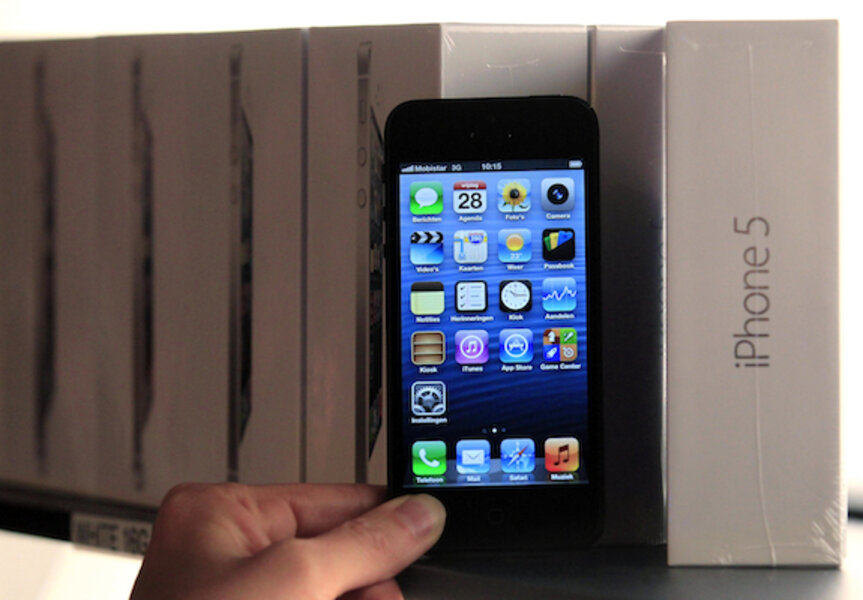Has demand for the iPhone begun to flag?
Demand for the iPhone, once an indefatigable driver of the smart-phone market, may finally be slipping.
According to separate reports in The Wall Street Journal and Reuters, Apple has slashed orders of LCD panels produced by LG, Sharp, and Japan Display. Reuters, which sources its article to Nikkei newswire, says Apple had initially asked for 65 million screens in the period extending from January to March; it is now reportedly asking for half of that. In addition, Apple could also be reassessing orders for memory chips.
It's important to note that these rumors remain unconfirmed by Apple and its suppliers. But if accurate, the news likely indicates that the iPhone 5 is not performing as well as Apple had originally hoped. In fact, as we noted last fall, the iPhone 5 launch actually missed many analyst predictions. This may have had something to do with the design of the iPhone 5, which was essentially a face-lifted iPhone 4, and not a radically new handset. It may also have had to do with supply constraints during the release of the phone. Apple always keeps these details close to the chest.
The iPhone also faces increased pressure from the ascendent Samsung, makers of the Galaxy S III device. Samsung said in October that it had sold 20 million Galaxy III handsets globally in the third quarter of 2012 alone, good enough to surpass Apple in many markets.
Meanwhile, Google, another leading competitor, is believed to have activated 500 million Android devices since the mobile OS was introduced in 2008. By comparison, the Associated Press reports, Apple has activated a grand total of 271 million iPhones.
In related news, in the wake of the Journal and Nikkei articles, Apple stock fell on Monday morning.
For more tech news, follow us on Twitter: @CSMHorizonsBlog






